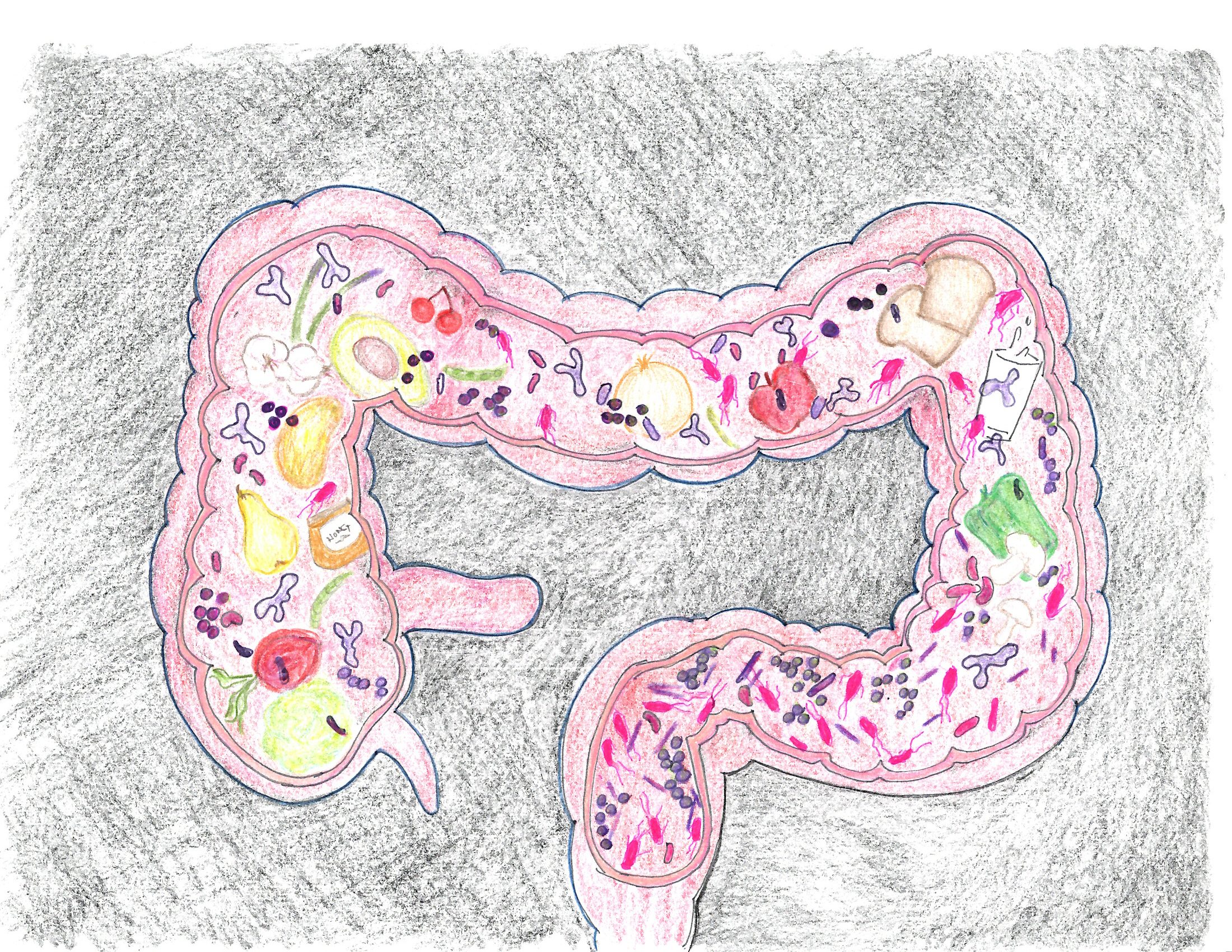FODMAPs are an acronym for a group of foods that are broken down into short chain carbohydrates that ferment and feed the bacteria in the large intestine. In sensitive individuals, FODMAP foods cause gas, bloating, and some other pretty unpleasant digestive disturbances. If you are going into healthcare, you will see people with IBS regularly, since about 1 in 7 people suffer from it at some point in their lives. It would be good to let them know about the Low FODMAP diet. This picture is my interpretation of bacteria feeding and fermenting some high FODMAP foods in the large intestine.


The amount of FODMAPs move through the majority of your intestine without being broken down. They’re a form of dietary fiber that’s fully immune to digestion. However, certain carbs act like FODMAPs in just a few people. Lactose and fructose are two examples. The general sensitivity to these carbs varies from person to person. In reality, scientists claim they play a role in digestive issues such as IBS. FODMAPs are fermented and used as food by gut bacteria until they enter the colon. Dietary fibers do the same thing by feeding your beneficial gut bacteria, which results in a variety of health benefits. Friendly bacteria, on the other hand, create methane, while bacteria that feed on FODMAPs produce hydrogen, which can cause gas, bloating, stomach cramps, pain, and constipation. Distention in the gut is responsible for all of these effects, and may also make the stomach appear larger. FODMAPs are also osmotically aggressive, which means they can cause diarrhea by drawing water into the intestine.